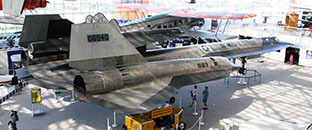| Lockheed | |||
|
D-21B #
|
|||
%20(8X4).JPG) |
|||
|
Photo:
Robert Deering 10/18/2012 National Museum of the USAF Wright-Paterson AFB (FFO) Dayton, Ohio |
|||
|
|||
|
The Lockheed D-21 is an
unmanned or "drone" aircraft
designed to carry out
high-speed, high-altitude
strategic reconnaissance
missions over hostile
territory. It is a product
of the Lockheed "Skunk
Works" program that
developed the A-12, YF-12A
and SR-71 "Blackbird" manned
aircraft in the 1960s.
Originally, the D-21 was designed to be launched from the back of a modified A-12 (redesignated M-12) carrier aircraft. The first flight of the D-21/M-12 combination took place on Dec. 22, 1964, but the first D-21 release from an M-12 did not occur until March 5, 1966. Two more launches were successful, but on July 30, 1966, a D-21 collided with the M-12 after release, destroying both aircraft and resulting in the death of one of the M-12's crew members. No further "piggyback" launches were attempted. A new launch system was developed using modified B-52H aircraft as carriers. The new D-21 configuration (designated D-21B) had dorsal mounting hooks for carriage under the B-52's wing, and a solid rocket booster for the initial acceleration required to start the ramjet engine. The first launch from a B-52 took place on Nov. 6, 1967, but the D-21 crashed. Several flights followed in 1968 with mixed success. The first operational launch was on Nov. 9, 1969, but the D-21B was lost. Several successful operational missions were flown over the next two years, but the D-21 program was highly classified and details have not been released. The program was canceled in 1971 and the D-21s were placed in storage. This D-21B (#535) was retired to the museum in 1993.
Source: National Museum of the United States
Air Force |

